What is a mixborder?
The first perennial mixborders appeared in England, from where they first spread across Europe and then conquered the entire world. Translated from English, the term means “mixing borders”.
In essence, a mixborder is an elongated flower bed that combines herbs, flowers, trees and shrubs, decorative foliage and flowering plants. But the main feature of a mixborder is not the mixture of species, but the combination of shapes and sizes. It combines several tiers, the highest of which is in the background, the low one occupies the foreground.
Important! The main differences between a mixborder and a flowerbed are the absence of a border and the stepped arrangement of flowers.
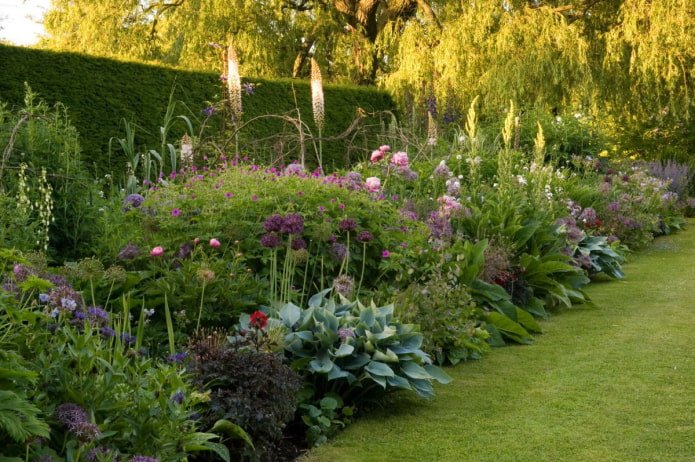
What types are there?
Compositions differ from each other in size and shape – for example, a mixborder along a fence is characterized by a one-sided view, and one located in the center has a circular planting pattern (the tallest trees are in the center).
But the main classification divides mixborders by the crops they include.
Flowerbed in English style
The design of a mixborder is like England itself: restrained, even refined. No bright, flashy colours or textures are used in its creation: instead, neat boxwoods, elegant roses, and cute daisies are used. It is customary to plant plants along paths leading to the house or connecting the main points of the site.

The photo shows an English mixborder
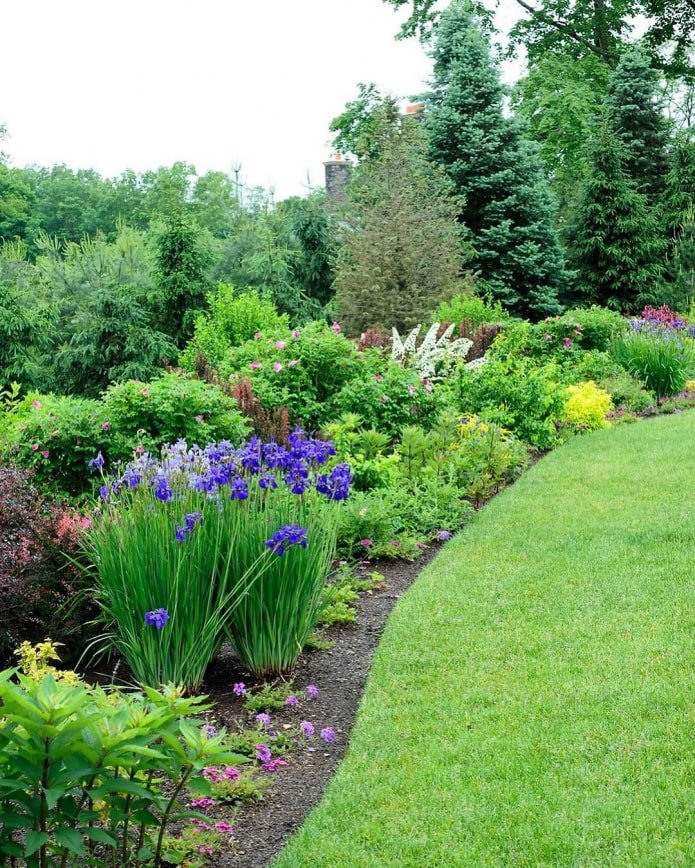
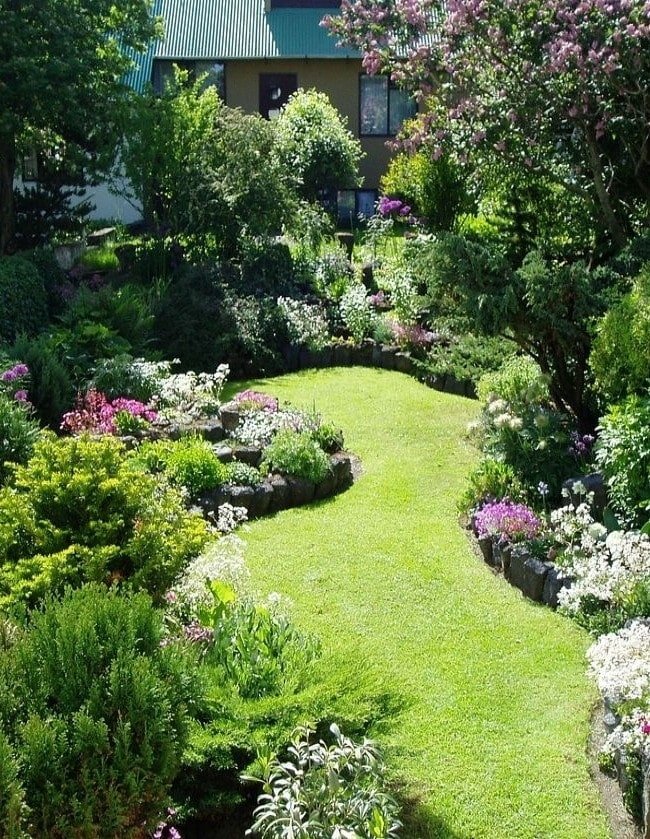
Meadow mixborder
Its design uses both simple wild flowers and lavender, poppies, even tulips – therefore this type can be called a continuation of the Provence style. You can create a meadow composition either exclusively from annuals or by combining flowers with perennials – bushes or trees.
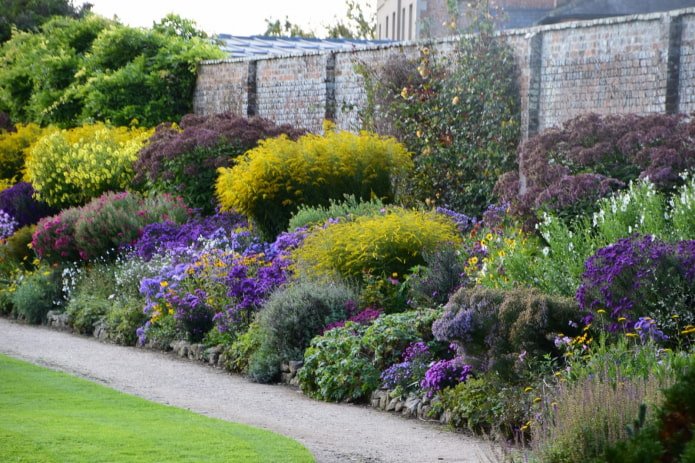
The photo shows a composition of meadow plants
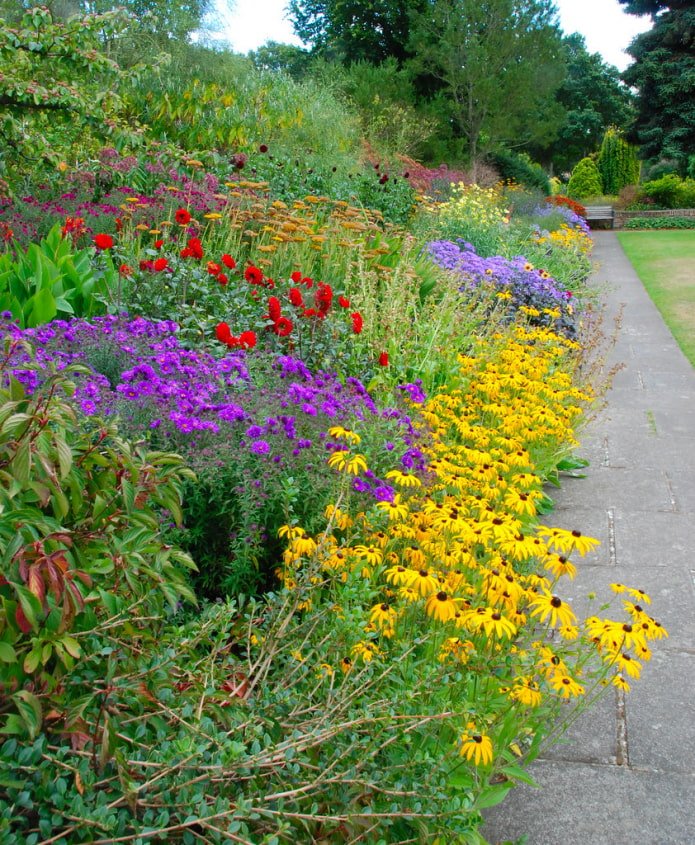
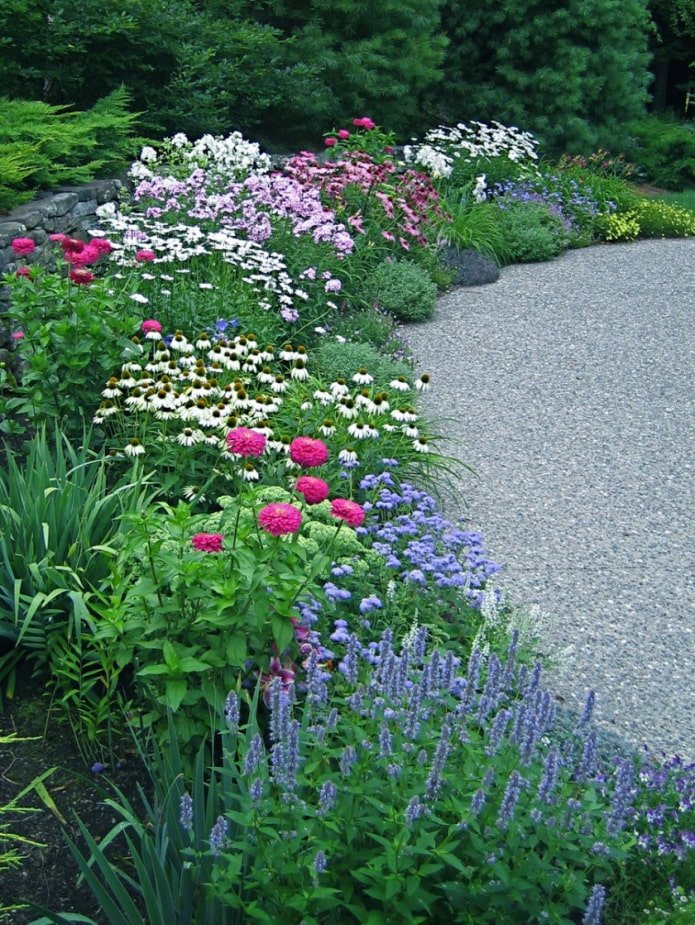
Country composition
Country style is perfect for decorating the area near a house in the village or a country cottage. It harmoniously combines the simplest and most familiar to the eye daisies, medium-height asters and small carnations, sunflowers reaching for the sun.
Vegetable mixborder
If the dacha is small and there is not enough space for decorative plantings, according to the mixborder scheme you can plant … vegetable crops! Basically, root crops (beets, carrots) or greens – lettuce, cabbage, dill, parsley, mint are used for this. Even flowering onions can make the bed more interesting.
Forest style
Happy owners of plots with a forest landscape will suit hosts, bells, ferns, Volzhanka. Choose crops that will not look contrasting against the background of pine trees or other trees growing near the house.
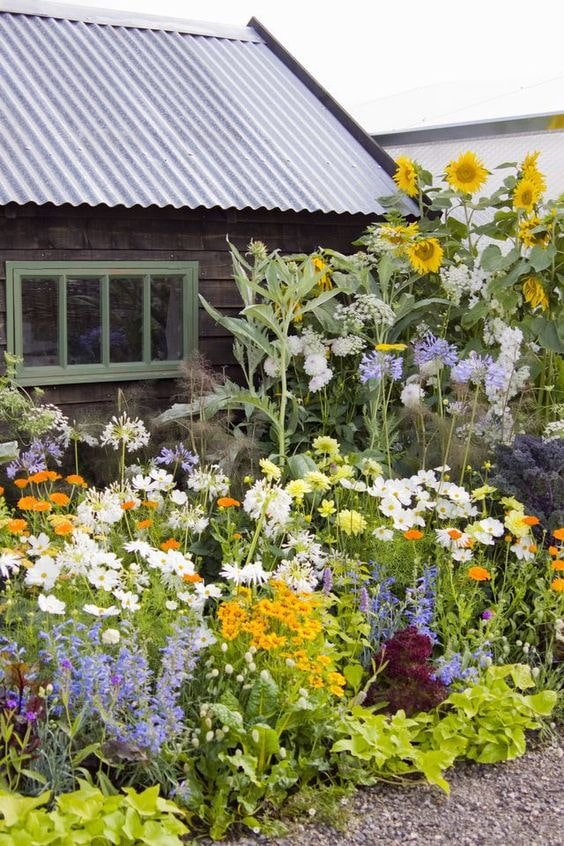

What plants and shrubs to plant?
If you look at the finished scheme below, you can see that plants of different “heights” are required to create a mixborder.

Tall
They are divided into coniferous and deciduous. The most light-loving tree with coniferous trees is considered to be blue spruce, the most shade-tolerant are fir or yew. Of the deciduous trees, barberry, hawthorn, and Japanese quince love the sun. Rowan and buckthorn, on the contrary, prefer to grow in the shade.
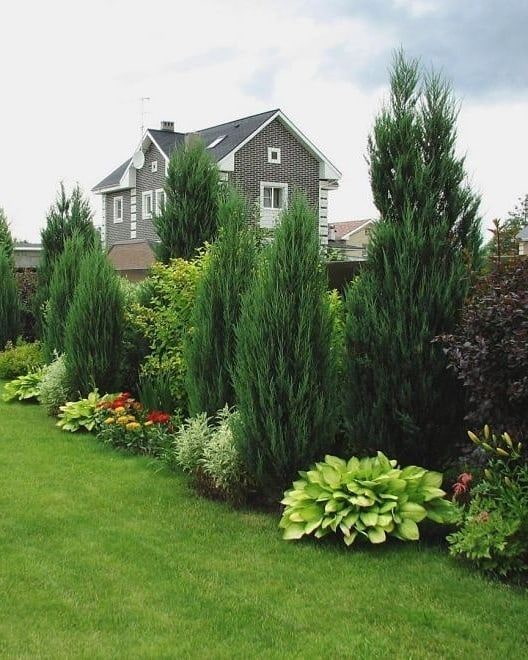
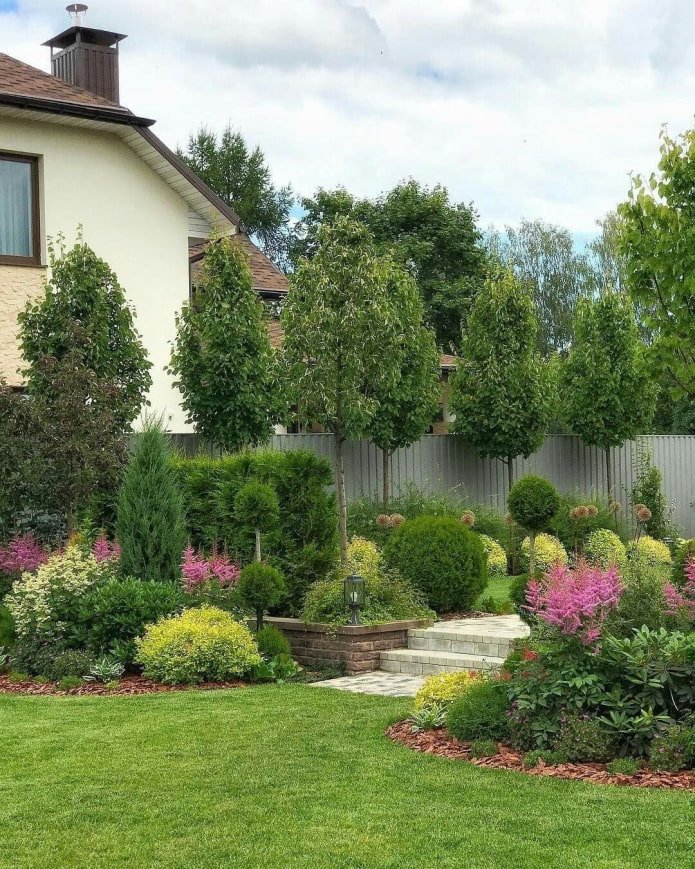
Medium-sized
This group includes deciduous and flowering shrubs, dwarf conifers, tall flowers (e.g. peonies). Examples of bushes for the open sunny side: hydrangeas, phloxes, rowan, lilac, smoke tree, willow. Boxwood, spirea, mock orange, and juniper will thrive in shady areas.
Important! Tall and medium bushes serve as skeletal “supports” for the entire composition – they are planted first, then the remaining space between them is filled.
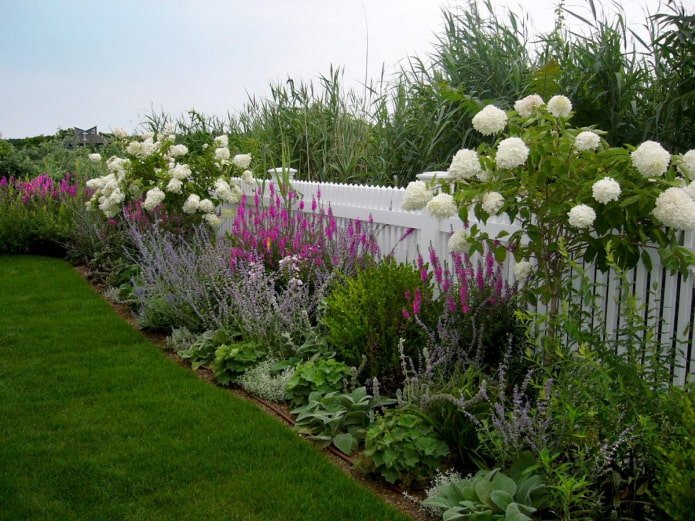
The photo shows a flowerbed along a fence
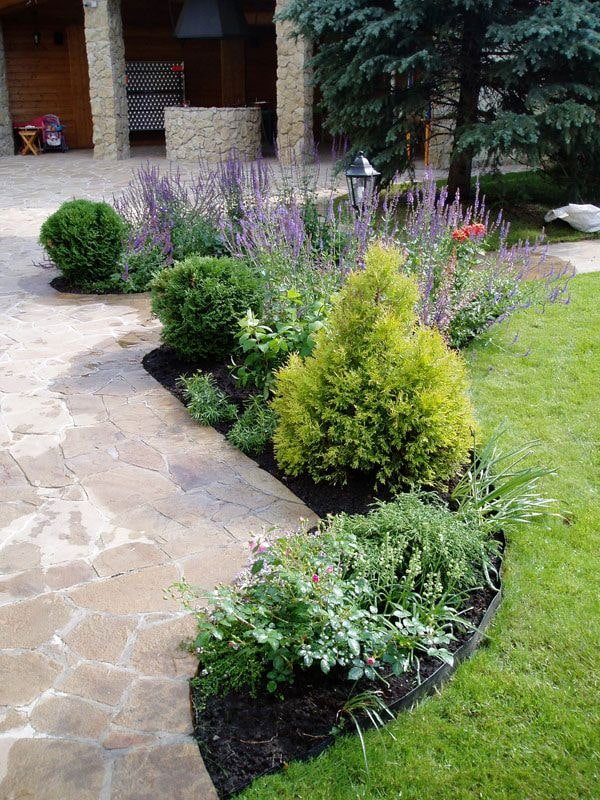

Low-growing
The lowest ones include some flowers for a mixborder, herbs or vegetables – they are planted along the outer edge. Geranium, hosta, lupine, saxifrage grow well in the shade. Among the sun-loving varieties are lavender, chrysanthemum, groundcover sedum, sedum, and subulate phlox.
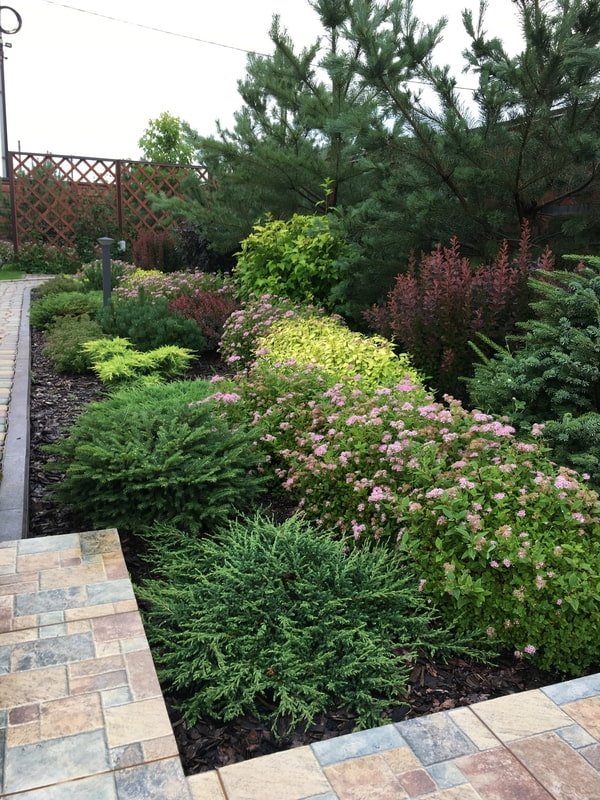
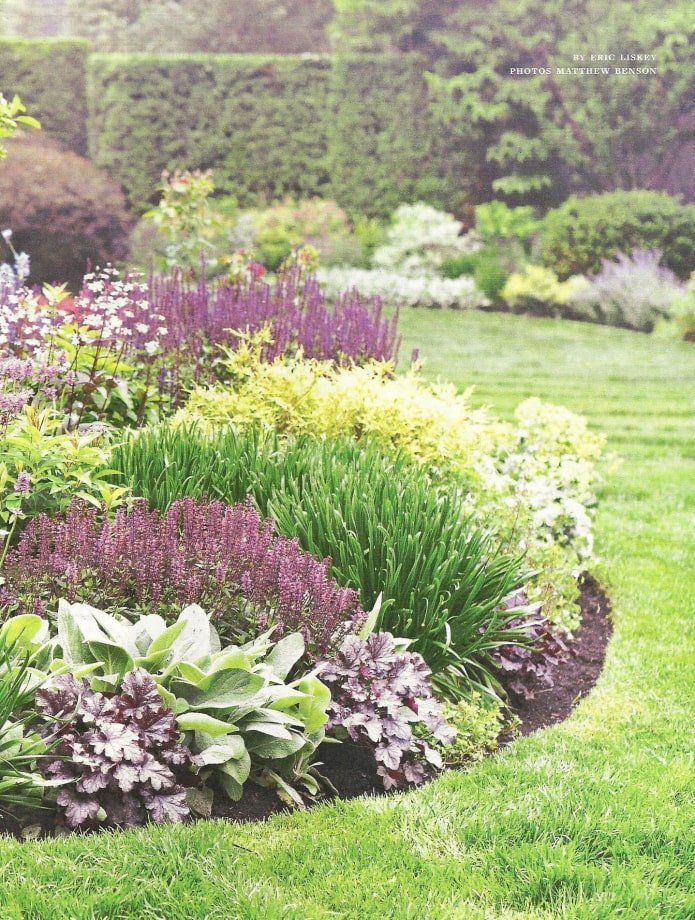
Where can they be placed?
There are many options for placing mixborders of perennials, the main ones are:
Along the fence
Here they plant a one-sided a composition where the tallest ones grow near the fence, and the shortest ones near the path or lawn. The same rule applies when mixborders are located near the walls of a house or other buildings.
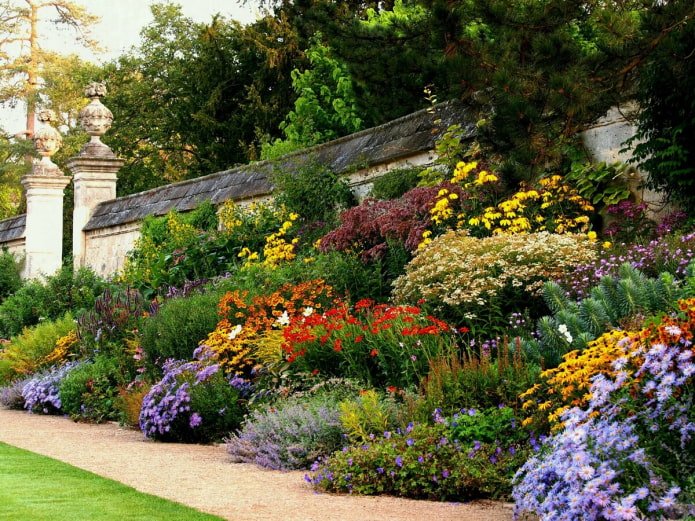

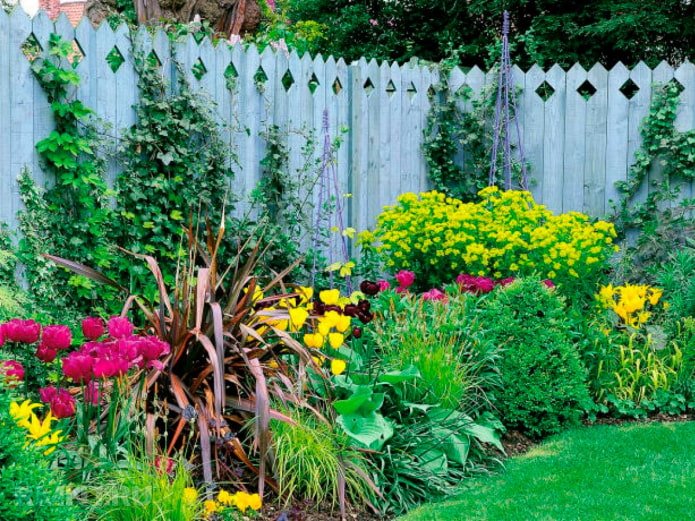
Along the paths
On both sides of paths are planted with small flower or creeping compositions.
In the center of the plot
The shape of the flower bed is usually round, on elongated ones it can be rectangular. The planting is circular – that is, the closer to the center on any side, the higher the plants and vice versa.
Mixborders are also often “tied” to other objects of landscape design – ponds, gazebos, recreation areas.
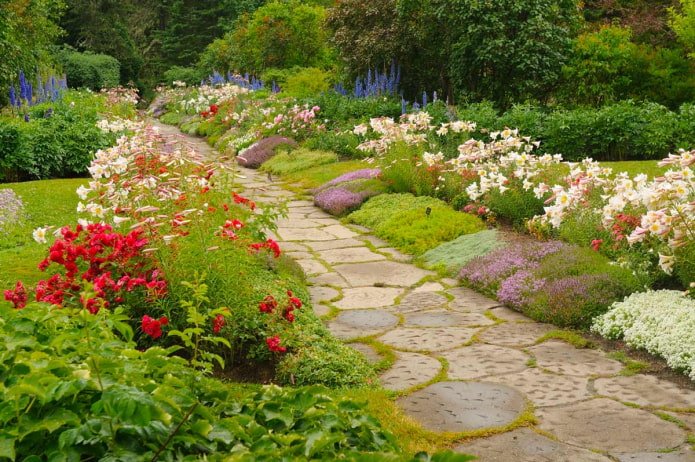
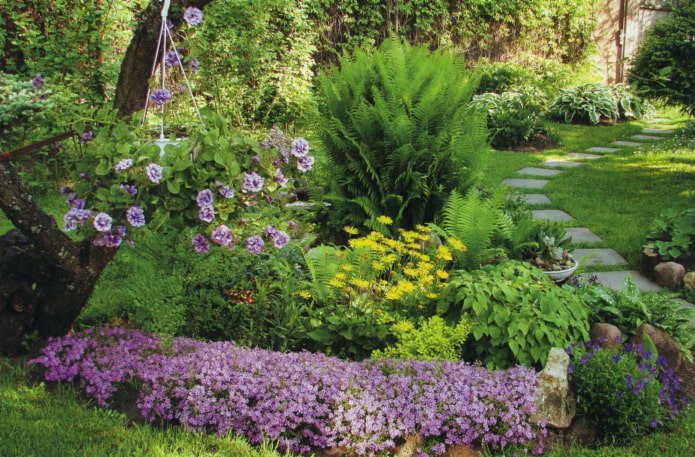
Ready-made schemes
Properly composed mixborders of any type look equally good in spring, summer and autumn: to achieve this, you need to take into account not only the size of the plants, but also the periods flowering, shade, leaf shape, many other nuances. You can figure it all out yourself or use ready-made photo schemes of mixborders.
With perennials
If you are confident in your idea of a mixed flowerbed and do not want to plant every year, but prefer to simply maintain the appearance – choose perennials.
These include flowering shrubs (yellow forsythia, pink or white hydrangea, lush purple lilac), as well as varieties with beautiful foliage (euonymus, hazel, dogwood). For a complete list with photos and names, see photo #3.
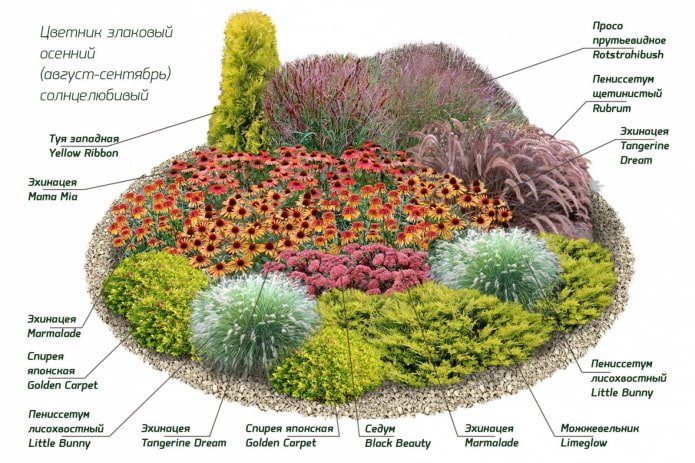
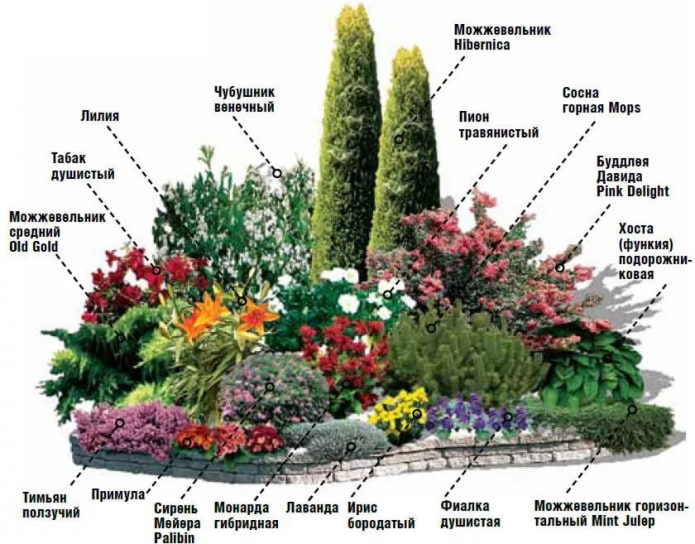

With conifers
A group of ever-green spruce, thuja, and cypress trees is loved because even in late autumn or winter the trees or bushes retain their beauty.
A coniferous mixborder can combine exclusively coniferous representatives, combining small junipers with large stately thujas. But most often, something decorative (for example: hostas) or flowering (rose, cinquefoil) is planted next to the needle-like branches.
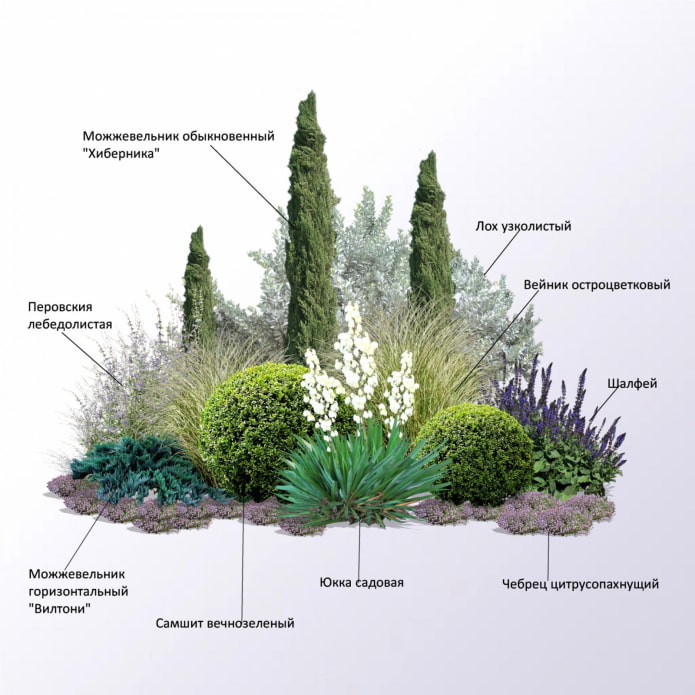
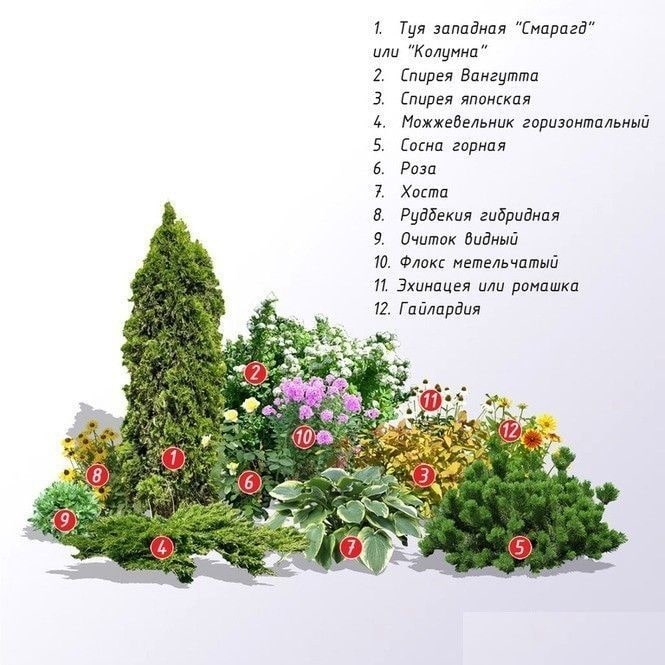
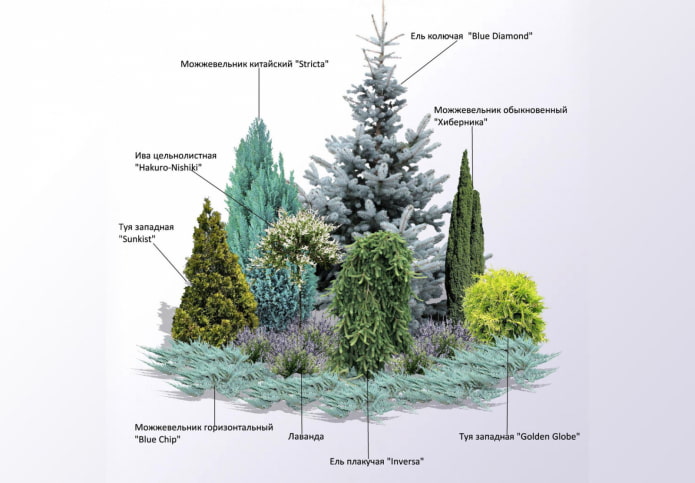
The photo shows a mixed border of coniferous trees and shrubs
With flowers
When choosing flowers for a mixed border, you need a system: usually plants that bloom in different seasons are placed nearby. This creates the feeling of a constantly living flower bed.
- May. Bulbous flowers bloom: tulips, irises, as well as phlox and lilies of the valley.
- June. Time for carnations, clematis, lilies, lupines, peonies.
- July. Marigolds, hydrangea, lavender, mallow, petunia come into play.
- August. Gladioli, asters, ageratum, cosmos, zinnias are fragrant.
- September. Dahlias, chrysanthemums, rudbeckias, and autumn crocuses delight with their lush caps.
Important! Inhabitants of mixed flowerbeds are selected according to the time of blooming, color range, and also type. For example, sage and reed grass would be suitable for a meadow garden, while hydrangea and rose would be suitable for an English garden.
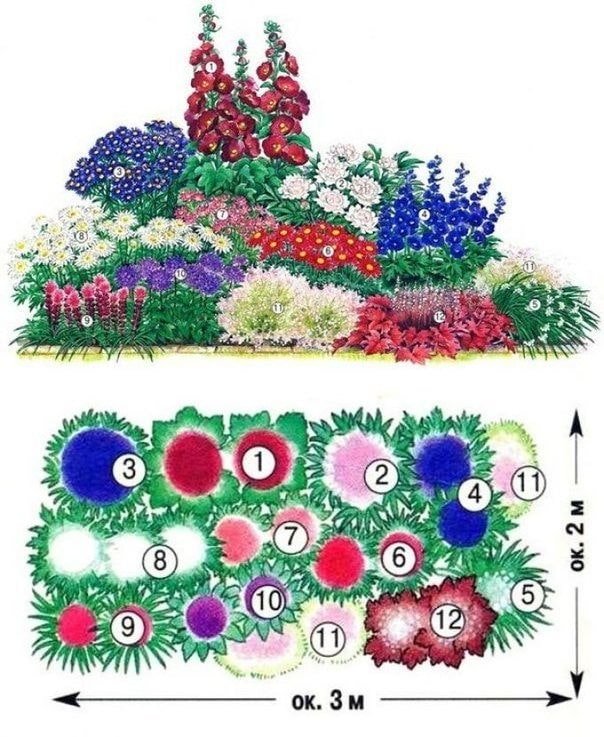
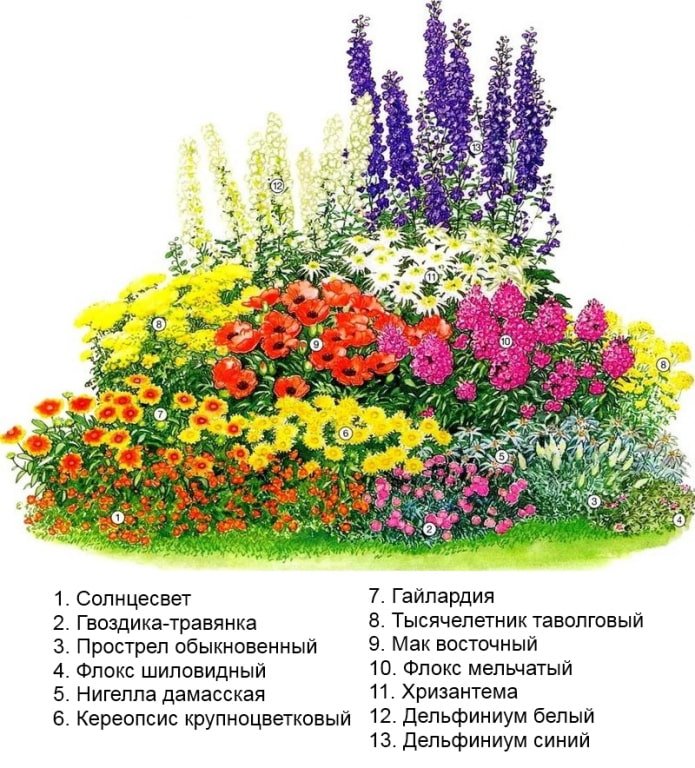

The photo shows a diagram of a meadow flower beds
With vegetables
Who said that a vegetable garden can’t look impressive? Pay attention to root crops with beautiful tops (beets), bright fruits (peppers), lettuce and cabbage – plant them nearby and enjoy not only the view, but also the harvest.
The second option is to use fragrant herbs as a base. Thyme, sage, mint, basil look great both in the garden and on a plate.
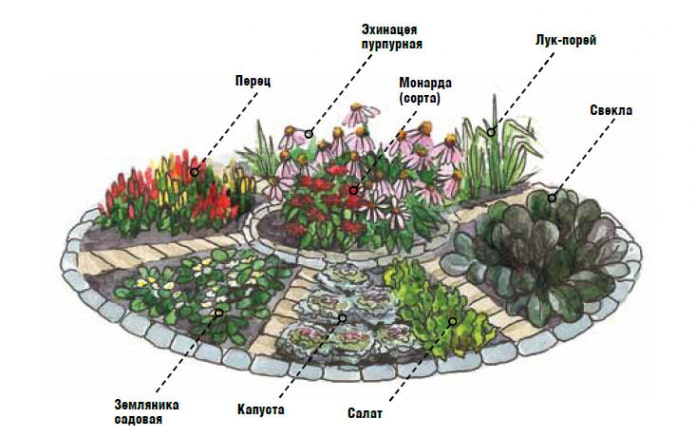
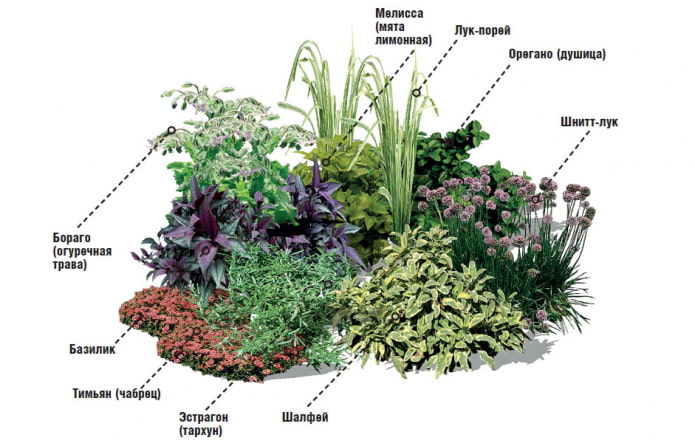
Mixed
Combined versions of mixborders are the most common: landscape designers combine annuals and perennials, flowering and conifers, deciduous and evergreens.
Advice! If you want to change the composition a little every year, form a skeleton of perennials and plant annual plants between them. In this way, annuals can be swapped or replaced with something new.
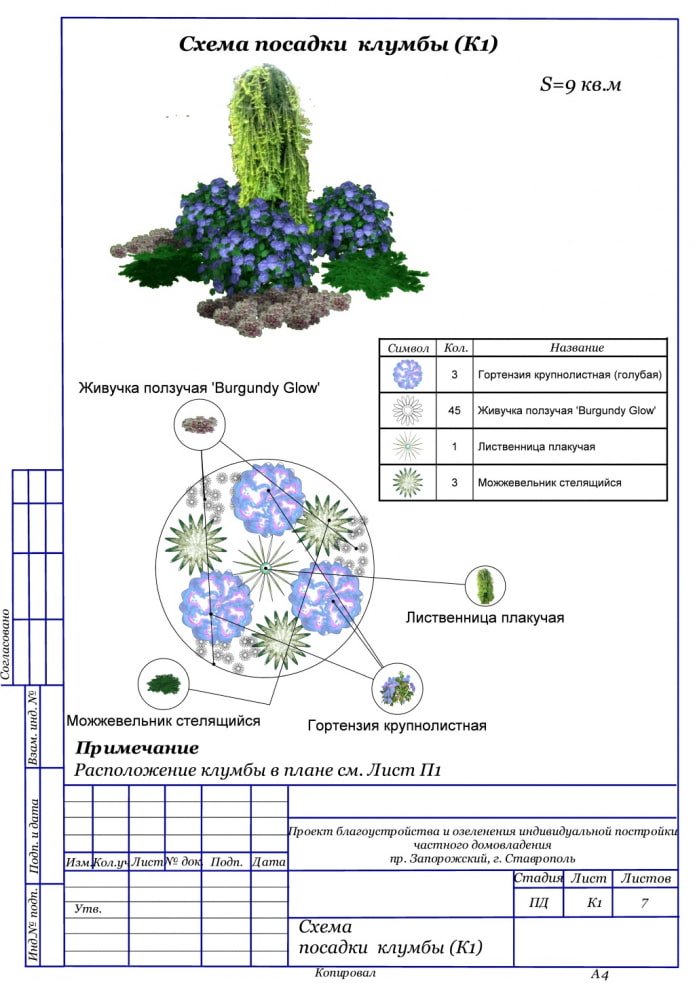
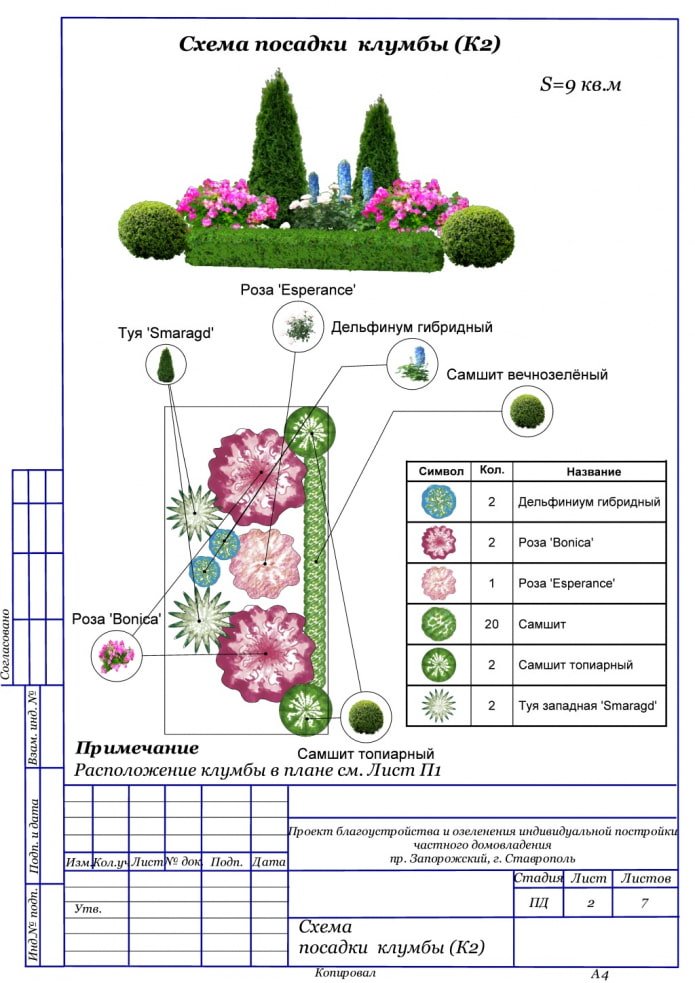
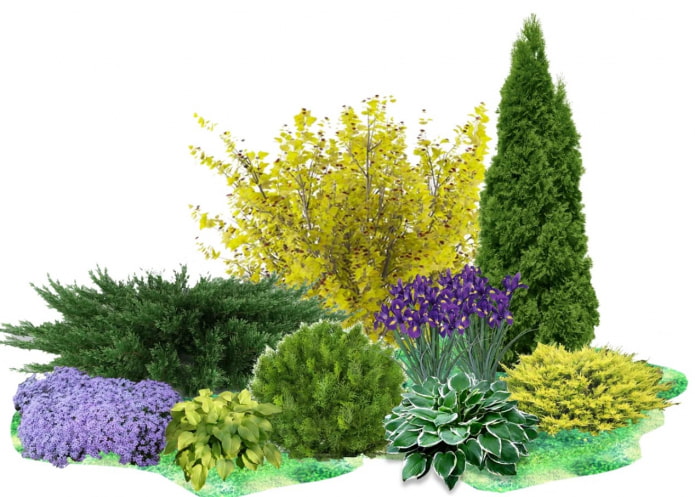
Recommendations for creation for beginners
Despite the fact that in You can find a lot of ready-made schemes on the Internet and read all the necessary information, creating a mixborder with your own hands is not so easy. Planting such a flowerbed requires from the gardener not only basic knowledge, but also experience. Therefore, we have prepared basic rules that will be useful at the initial stage:
- Consider the existing conditions. Light level, acidity and soil composition, wind strength, minimum and maximum temperatures.
- Study the proposed plants. Usually, the flowering period, plant size, and growing conditions requirements are indicated on seed packages.
- Decide on the appearance. What style and palette will suit best.
- Start by choosing skeletal plants. Dense shrubs that retain their appearance from spring to autumn or all year round. The distances between them will later be filled with small annuals.
- Do not overdo it with the quantity. Many different species in several copies form a mess, it is better to choose a maximum of 3 tall, medium, low plants. This is usually enough.
Important! Do not forget the main thing: a mixborder is a living organism. Therefore, in order for it to remain in good condition, it requires constant care, which consists of watering, weeding, pruning, removing yellowed sectors.
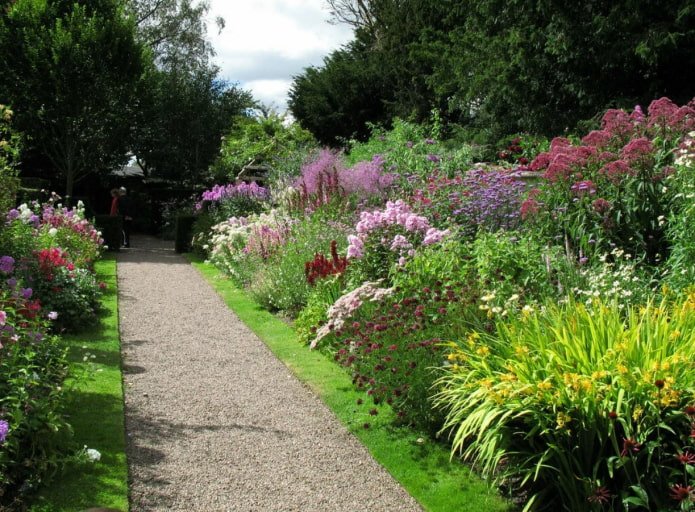
Examples in landscape design
In creating mixborders, it is better to learn from the mistakes of others and implement proven methods of effective decoration. For example, you can dilute the flower arrangement with spike grasses: pampas grass, barley, lagurus.
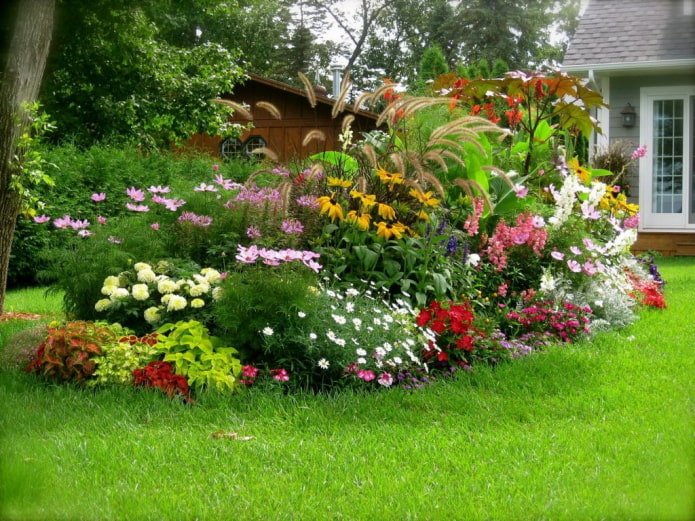
In order not to overdo it with color, choose one of your favorite flowers, and collect the main part of the composition from coniferous and deciduous shrubs.
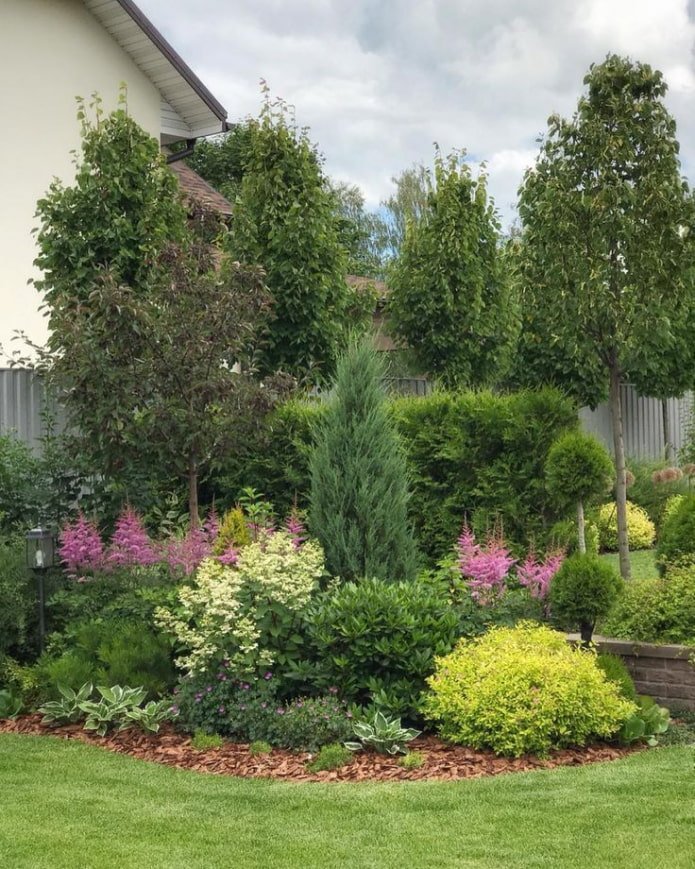
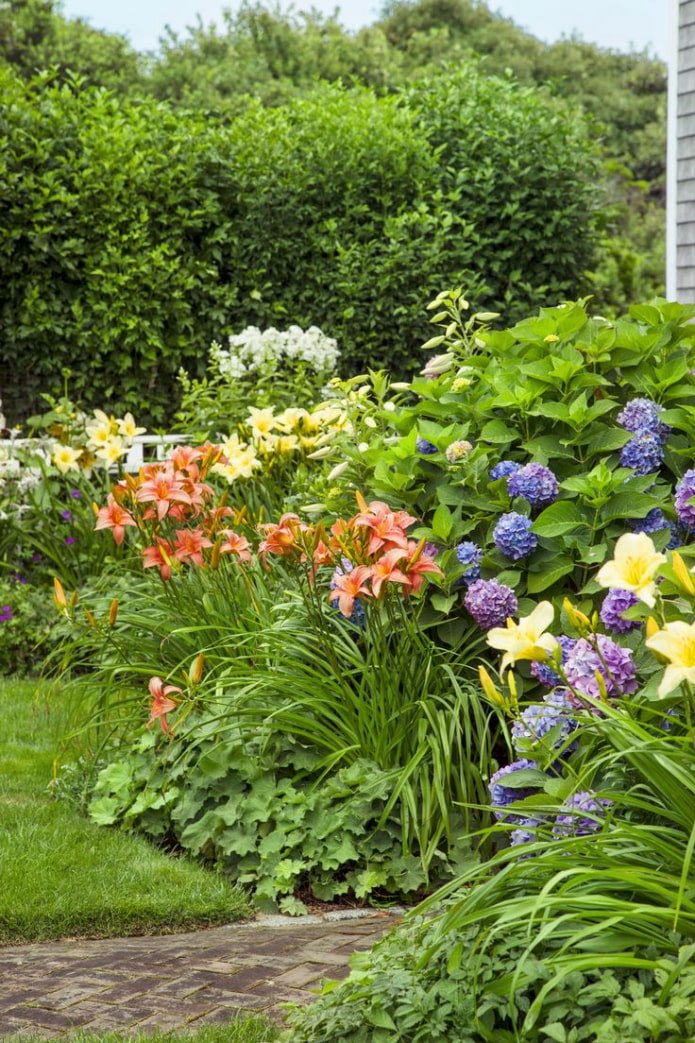
The last piece of advice is that if you plan to have a fountain/pond on your property, combine it with the mixborder. A multi-tiered flowerbed is a great option for framing any decorative solution.

Creating a mixborder is like assembling a living constructor. Even if something doesn’t work out right away, everything can be fixed: so don’t be afraid to start and experiment!
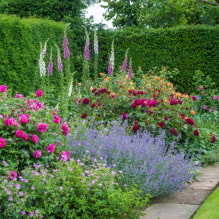
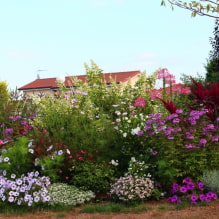
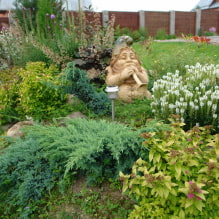
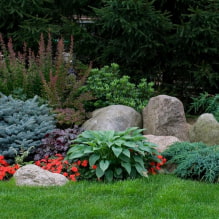

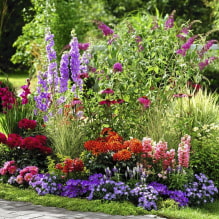
Now reading:
- Buying quartz laminate: comparing with regular laminate, identifying the pros and cons.
- Provence style wallpaper: types, interior photos, selection of design and colors.
- Ultimate Guide to Buying a Pre-Owned Porsche
- Plasterboard partitions: 50+ photos and current ideas for zoning
- Ideas for landscaping a fence: what can be planted in a summer house? Photo gallery.